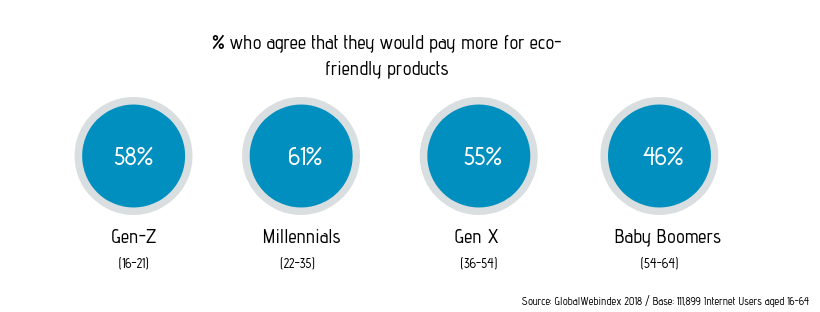The world is ending, and we are all going to die.
Alright, that’s a bit on the hyperbolic side, but the point stands -- as citizens of Earth, the less waste we create, the better. In recent years, the restaurant industry has hopped on board the sustainability train, and we couldn’t support that more. For us, it’s perfect: good for the planet, and great for business.
Admittedly, the concept of sustainable restaurants does seem like a contradiction.
The bar industry is basically predicated on short-term decision making and lavish self-indulgence. Thinking about food trends in the past decade or so, nose-to-tail eating has been all the rage. The parts of the animal that were once ‘butcher cuts’ have been warmly embraced by fine dining. We haven’t quite caught up to our counterparts in the kitchen on the sustainability thing. Until recently, our side of the restaurant has been slower to embrace that mentality.
.png?width=938&name=Add%20a%20little%20bit%20of%20body%20text%20(1).png)
Behind the bar, think about the simplest examples -- we squeeze the juice from a lemon, maybe make a tuile, and then the fruit goes in the garbage. Drinks are shaken over ice that gets discarded, and then poured over entirely new ice. We use a tasting straw and then immediately throw it away. Harsh chemicals are used for cleaning, and each guest gets a new napkin (that they rarely use).
Indeed, there are reasons for a lot of these things. A lot goes into our customers’ drinks. And these days, at sometimes $18 a pop, a lot should go into them. However, sustainability and luxury don’t need to be mutually exclusive. By thinking outside the box, and re-evaluating how we use our resources, bars across the globe are making it happen.
One of the often-championed examples of low-waste cocktail production was the White Lyan in London. They didn’t use ice -- instead, they pre-batched and cooled cocktails. They didn’t use whole citrus either, instead opting to utilize a citric acid to reduce waste. The bar even obtained a distilling license and made their own spirits in house, to prevent the pollution involved in the liquor distribution chain.
The results were nothing short of astounding. The White Lyan boasted an 85% efficiency rate, using only a single trash bag each week. While that’s a decidedly extreme example, there are less radical (but equally effective) solutions happening around the globe.

One of our favorite examples is a duo of bartenders known as Trash Tiki. Kelsey Rammage and Lain Griffiths founded the pop-up and consulting company to bring sustainable cocktail-ing to the world.
Trash Tiki holds pop up events at bars and restaurants, where they ask hosts for the venue’s would-be garbage. Pineapple cores and juiced citrus husks are used for infusions or homemade cordials, for example. At each of their pop-up events, Trash Tiki posts Instagram-only menus, in the interest of saving paper. Cups and straws are re-used by patrons throughout the night. In addition to these pop-ups, Trash Tiki tours and gives seminars on sustainable cocktail practices. It’s not just a gimmick, either -- these folks make some damn good drinks. In fact, they’ve even posted some choice recipes over on their website.
Like-minded bar professionals suggest looking between the lines for places to be more sustainable. How energy efficient is your ice machine? How much ice are you actually using? Next time you load the dishwasher, take a look -- are you maximizing the per-load capabilities? We know these aren’t the sexiest problems to solve.
But, the numbers show that public cares...a lot.
Globally, 75% of millennials said they would be happy to pay more for eco-friendly products. In 2018, the straw ban became our industry’s “song of the summer”. It’s not just small cities here and there taking action, though. Sustainable food and beverage is set to go worldwide in coming years. The EU even approved legislation to outright ban single-use plastics by 2021. The need for sustainable restaurants just makes sense.

As with other trends we’ve talked about, big business is getting in on the action, too. A coalition of some of the largest brands in the world have created The Loop. In short, consumers will use their product, and put the empty container in a designated ‘use again’ bin, which will be shipped back to the company. Each container will be refilled and re-used for other customers of the platform.
While the Loop is made for consumer-packaged goods, it’s absolutely a sign of the times, and perhaps something to consider ourselves. Not only does it make sense, it also makes dollars (har har).
While altruism is good, there is absolutely money to be made here. It boils down to be pretty simple -- the less you use, the less you buy. The exact savings can be hard to quantify, but by practicing sustainability, we can cut down those pesky operating costs. The intangibles that all seem to add up -- water bills, power bills, napkins, cleaning and trash supplies. By saving money on these ‘little things’, we can put money into our own pockets. And in our industry, where profits are razor thin, every penny counts.
The appeal of sustainability in the cocktail industry, to us, seems like a no-brainer. In a big picture sense, we all want to do right by our planet. We can all take some small steps, and the impact is huge. What’s more, the ‘outside the box’ thinking that this calls for spearheads innovation and new ideas within our craft and our industry.
When you mix all that in with some dollars saved...well, we’re in.



Comments